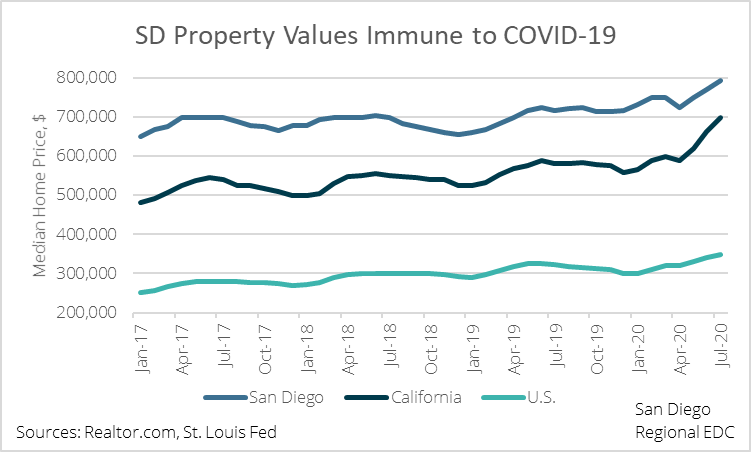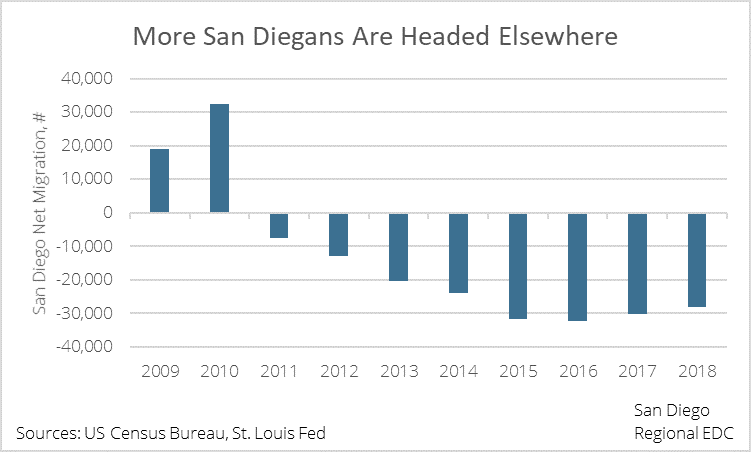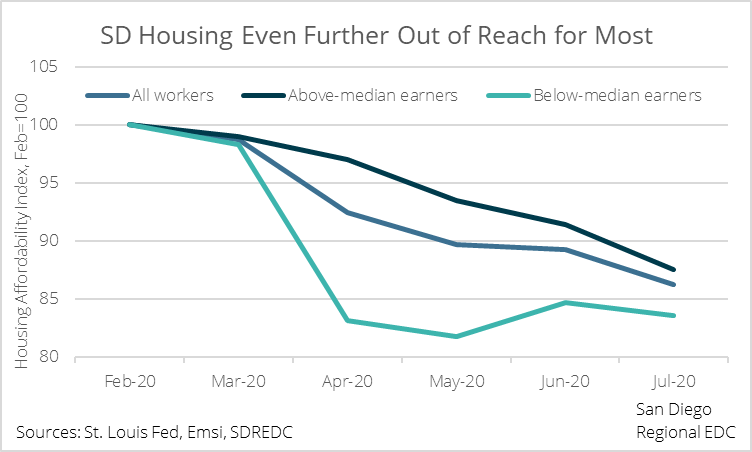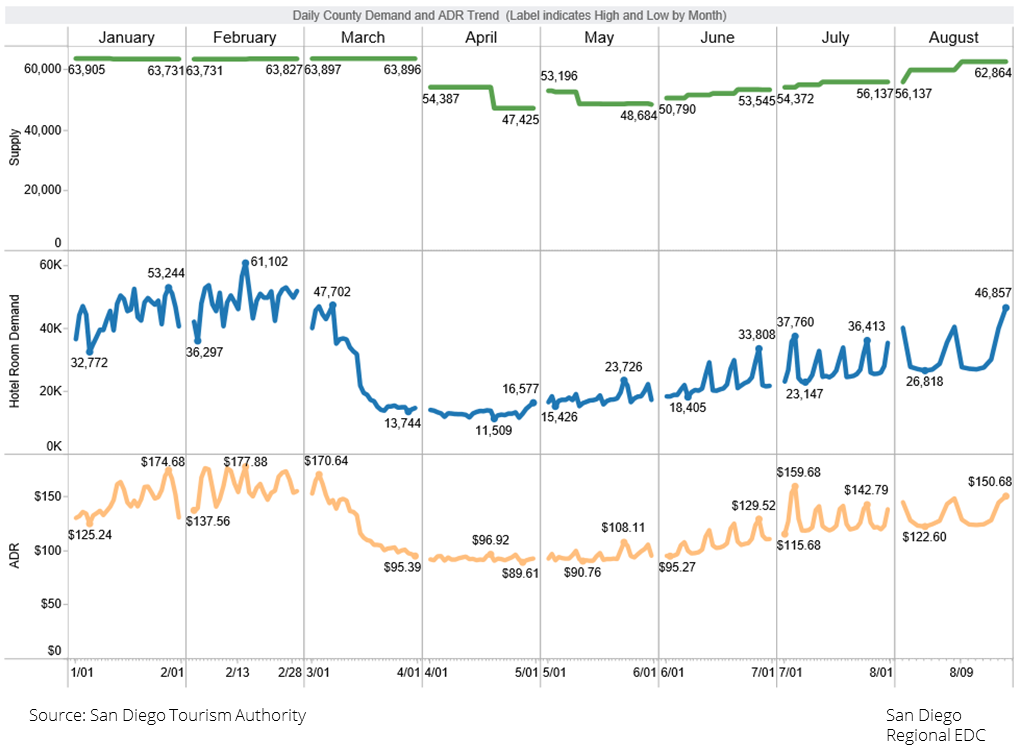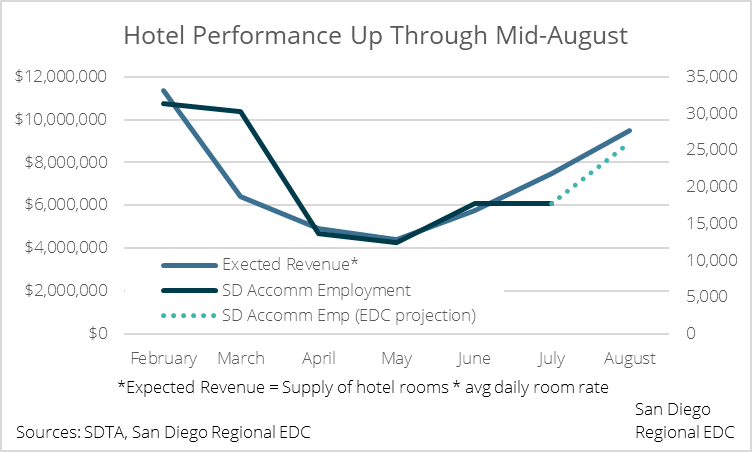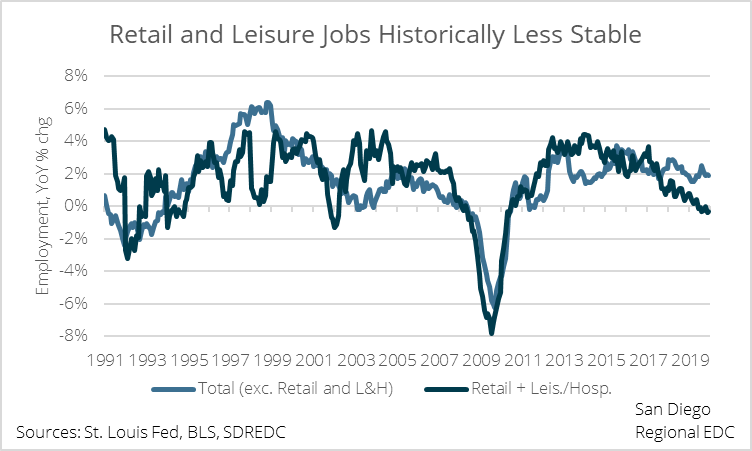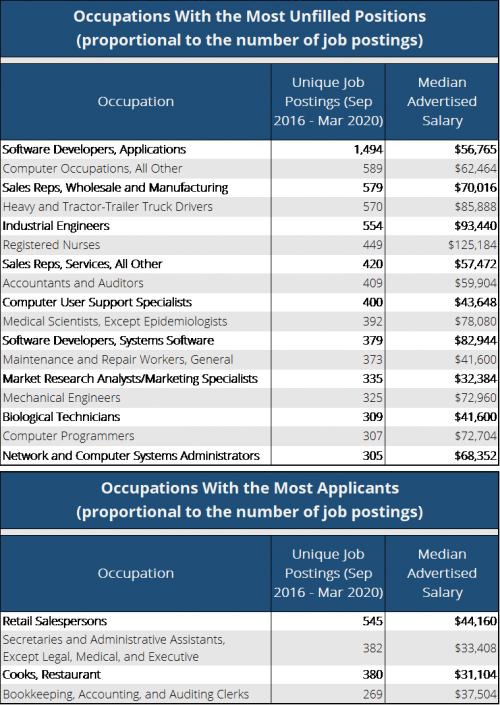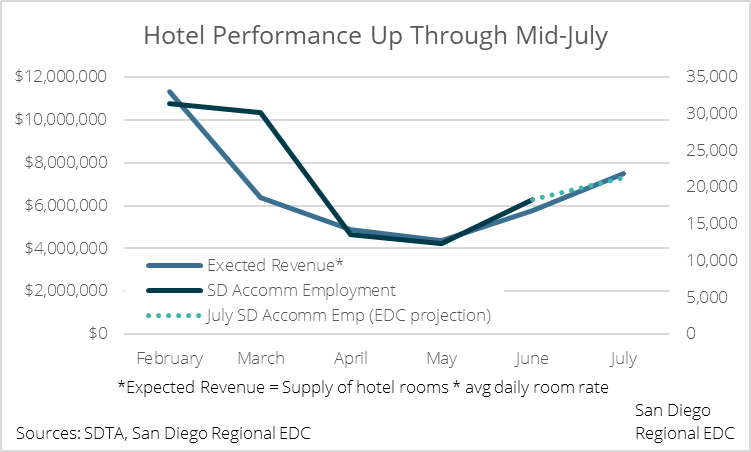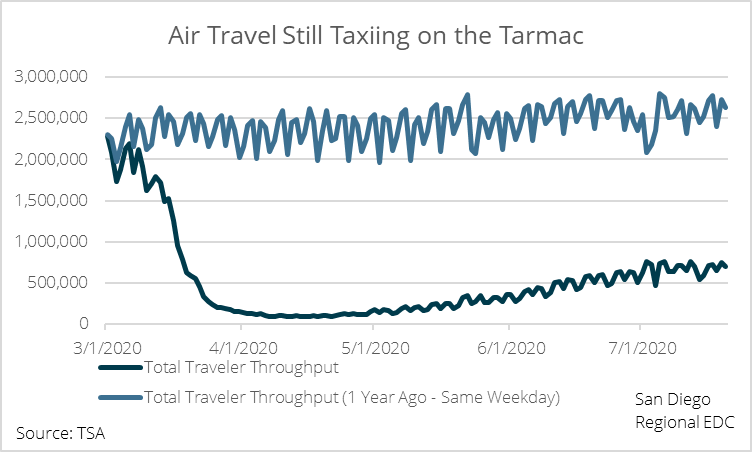KEY TAKEAWAYS
- A deep dive into San Diego’s employment report for August reveals a troubling trend.
- Thousands of workers have fled the labor force since February, which has artificially lowered the unemployment rate and puts San Diego’s economy at risk.
THE SNAG
We’re taking a deeper dive into San Diego’s employment report for August. The region added 20,500 payroll jobs last month as businesses forced to close again in July were allowed to reopen with restrictions in August. Additionally, the unemployment rate fell 2.5 percentage points from 12.4 percent in July to 9.9 percent, which is more than three times the largest downward move in the rate observed before the pandemic. However, a closer look at the record drop in unemployment last month reveals a troubling trend.
In order to be counted as unemployed in the Labor Department’s employment report, workers must still be in the labor force, which is defined as actively seeking employment over the four weeks prior to the survey. This means that the unemployment rate can theoretically drop in a given survey month, even if there were no job gains, if enough workers leave the job market.
Some 16,400 workers exited the labor force in August, the largest single-month exodus in more than six years. Without last month’s contraction in the labor force, the unemployment rate would have stood at 10.8 percent. Widening the temporal aperture a bit, San Diego’s labor force has withered by 36,200 workers since February before the COVID downturn took hold. If those workers had not fled the workforce, August’s unemployment rate would have stood at an even more elevated 11.9 percent in August, two full percentage points above the officially reported 9.9 percent, and would have peaked at 17.6 percent in May, 2.4 percentage points higher than the officially reported rate of 15.2 percent that month.
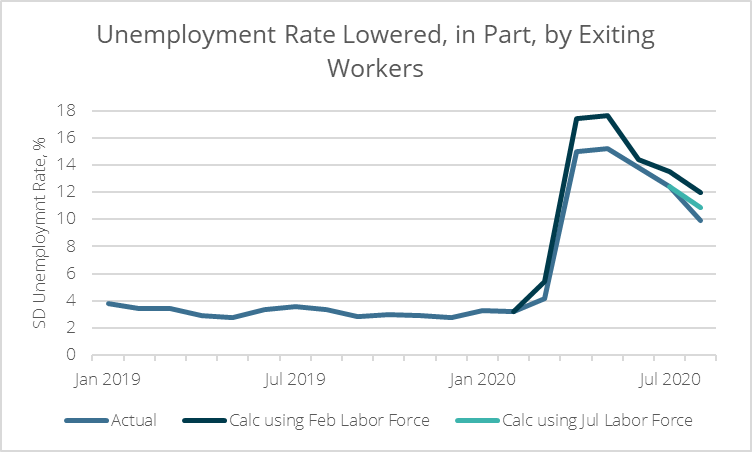
WHY IT MATTERS
The above creates at least two issues that can have tangible effects on the real economy that span well beyond any technical foibles underpinning the calculation of the unemployment rate:
- Workers who drop out of the labor force cannot receive unemployment insurance (UI) benefits. The average weekly UI payout in California is $305.82. Using that figure as a guidepost (UI payout data aren’t readily available at the metro or county levels), the loss in household income conservatively amounts to roughly $20 million dollars each month—or almost a quarter billion dollars per year. And that’s just accounting for the 16,000 or so workers who left in August. Including the roughly 20,000 other discouraged workers who have left since February, that $240 million balloons to nearly $600 million that is no longer reaching households’ wallets—and, therefore, local businesses—in a given year.
- Marginally attached workers are significantly less likely to rejoin the labor force as time wears on. The longer that workers remain on the sidelines, the more effectively they can adjust household spending habits and re-examine the trade-offs between working and being home with family. On average, it takes higher pay to entice workers to rejoin the labor force than to keep them in the labor force to begin with.
A significant rise in worker pay sufficient to draw re-entrants back to the job market will hinge on a dramatically lower unemployment rate, which is well off in the future, perhaps as late as 2022. Given that, there’s a good chance that many of those who’ve already left the job force will not return. It will also give many more the opportunity to exit if they are not rehired soon.
Ultimately, this translates to San Diego’s economy relying on fewer workers to drive growth and maintain economic stability. The economic literature on this topic suggests that future economic downturns could become more frequent and deeper if growth and stability rest on a smaller number of employees. That’s why we need to get this recovery right – learn more here.
That’s why a path forward for discouraged workers that includes upskilling and reskilling is so necessary. The prospect of a more stable and lucrative career would likely draw many people who have left over the past six months back to the labor force. This could put money back into people’s pockets well ahead of late next year or early 2022 and could help to mitigate the possibility of any longer term damage to San Diego’s economy.
EDC’s Advancing San Diego initiative is exploring a viable path forward. With better connectivity to academia, business leaders can begin to communicate the specific skills required to successfully perform jobs in any number of high-demand positions, providing the roadmap for colleges and universities to enhance their curricula perhaps by building out “micro-credential” certificates or academic programs designed to prepare workers in a matter of weeks—rather than years—to take on those jobs.
For more COVID-19 recovery resources and information, please visit this page.
Regardless of how this all plays out, EDC is here to help. You can use the button below to request our assistance with finding information, applying to relief programs, and more.
You might also like:

